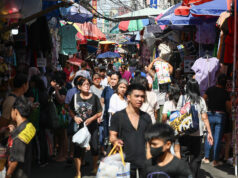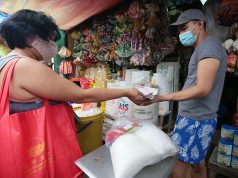Common causes of kitchen fires and how to stop them
THE BUREAU of Fire Protection lists electrical connections and open flames as two of the country’s most common causes of fires. And in the kitchen where food is cooked over fire, electrical appliances stand in every corner, and gas leaks can happen, it’s easy to see how the area can be hazardous.
While we learned as children that fire can be put out with water, this isn’t always the case. There are different types of fires, and for some, pouring water may spread the flames instead of extinguishing them.
One of the most common types of kitchen fires is fire caused by cooking oils and grease.
The most important thing to remember: don’t put it out with water — that will just spread the fire. Instead, turn off the burner first. Oxygen encourages fire so deplete it by covering the cooking pan with a metal lid. Don’t use a glass lid since that can shatter from the heat, and make sure you protect yourself with oven mitts before touching any of the scalding hot items. You can also use a lot of baking soda to smother small flames, but never use flour as it can worsen things.
Avoid grease fires by keeping cooking surfaces clean. Oils spatter when cooking fried foods, covering the stove and kitchen counters with grease. An easy way to clean a stovetop is to wipe it down with a mix of baking soda, salt, and dish soap. Meanwhile, stove grates and burners can be washed or soaked with hot water and soap.
Another common fire is an electrical fire from kitchen appliances. These can happen inside appliances like microwave ovens, toasters and such. In this case, keep the appliance door closed and cut off the fuel source, which means unplug the appliance.
It goes without saying that since electricity is involved, don’t use conductors like water to extinguish the fire. Also, have the appliance checked and repaired before attempting to use it again. The fire may have damaged some parts and made it more dangerous.
To prevent electrical fires, make sure that your appliances are installed correctly and maintained regularly. Unplug them when not in use, and keep water away from sockets and plugs at all times.
Then there is fire or an explosion ignited by gas leaks. A small gas leak in an LPG tank, if not tended to immediately, can fill the kitchen with flammable gas. And once a heat source is turned on – a lighter, a match, or a burner – fire will catch and spread quickly. If you detect a gas leak, open all doors and windows fully to let the gas out and call a professional to handle it for you.
Fires caused by gas leaks are usually too big to put out on your own, so it’s best to evacuate and seek help.
The best way to prevent LPG accidents is to buy only quality kitchen fuel like Solane LPG. There are many illegal sellers of fake LPG that can cause the very explosions you’re trying to avoid, so make sure that you only buy from authorized distributors.
Just as there are several kinds of fires, there are also different types of fire extinguishers. For the kitchen, the most common ones to have ready is Class B for flammable liquid and gas fires and Class C for electrical fires. Invest in these extinguishers and place them in an accessible area.
It’s also a good idea to install a fire alarm system and come up with an evacuation plan. Familiarize yourselves with your building’s emergency protocols, too, if you live in one.
Remember that these are just basic steps and are meant for smaller fires. As soon as you feel like a fire is out of your control, evacuate immediately and call for professional help.
Order Verified Solane LPG through Solane’s Metro Manila hotline 8887-5555 or send a message to their Facebook page or nationwide mobile 0918-887-5555.



